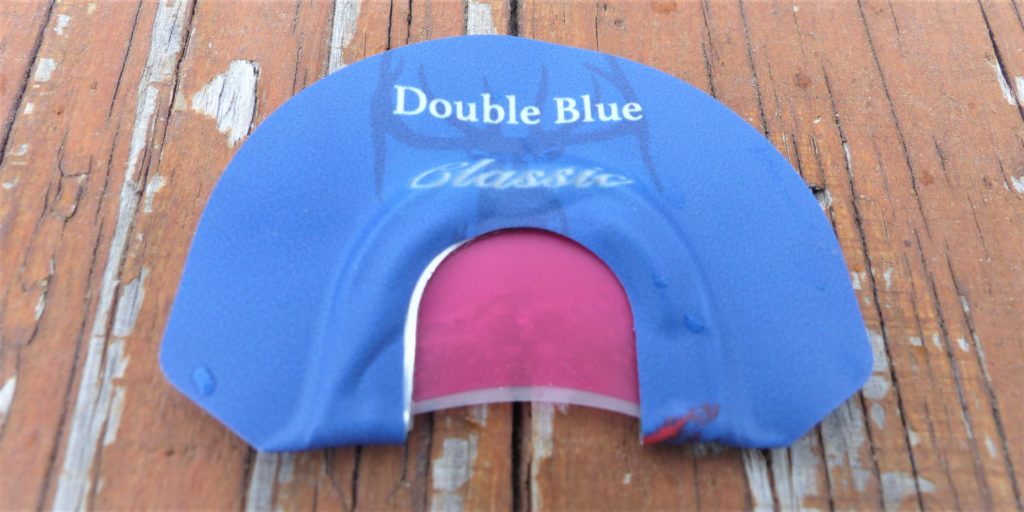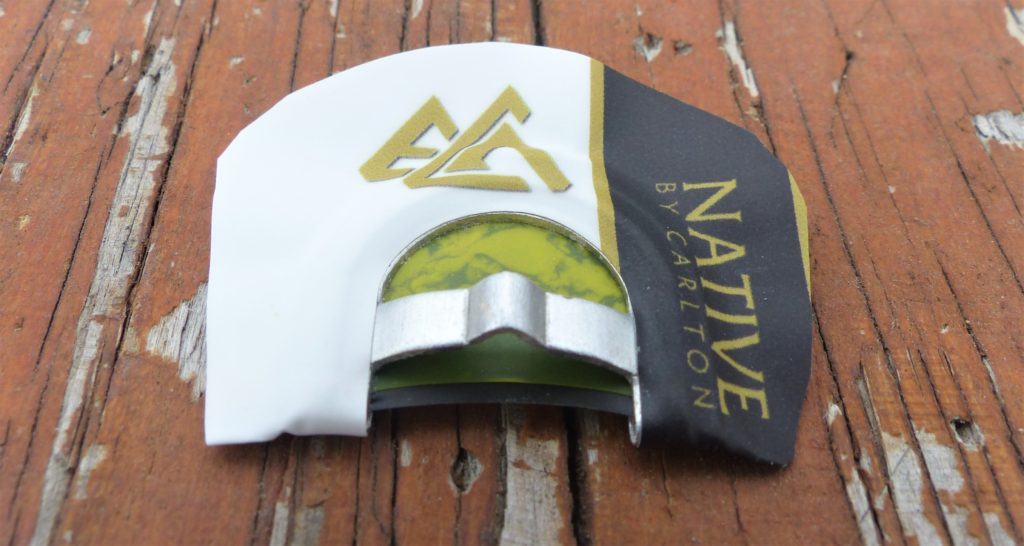I’d never used the Native By Carlton elk calls before doing this review, but I must say, I’m impressed. While I’d say they aren’t quite as easy to use as the Phelps Game Calls (see that review here) or Rocky Mountain Game Calls, (see my review here) they sound phenomenal! I especially loved the high end bugle tones I could get from these elk calls. Whether you love the classic series or the new RIPIT frame from Native by Carlton, you’ll be able to find one you like. These calls will be with me this fall.
Choosing the Right Diaphragm Elk Call

How in the world do you choose a diaphragm elk call? There are a so many on the market. Do they REALLY sound that different from each other? In this diaphragm elk call review, I tested out 24 different elk diaphragm calls side by side to see, hear, and feel the differences. So, here we go. Let’s see what makes these calls different.
Native Diaphragm Elk Call Differences
Ripit/Classic Style
A quick look at these calls and you’ll notice a couple differences between these designs. Dome, no dome(classic) and RIPIT style are what we see here. The Amp frame is a classic well-liked frame, and the new RIPIT frame gave me some amazing sounds!
Frame Style
The other major differences between the smaller Phelps Amp and Rocky Mountain Calls vs these Native calls is the frame size. The Native offers a larger frame, meaning more latex to work with. This can offer more flexibility in the call. The larger frame also needs to be placed further back in your mouth, so if you have a bad gag reflex, you’ll want to make sure to take time to get used to these calls.
Latex Thickness and Stretch
The stretch and thickness of the latex used affects the sound the call makes as well. A thicker latex is a little more difficult to use, but can get some more mature sounds for you. Additionally, the degree with which the latex is stretched also affects the tone that can be made by that call.
Elk Diaphragm Calls – Break Them In!
An often forgot about part of finding the right elk diaphragm call is making sure you break in the call before you decide if you like it or not. Pulling it out of the package, doing a few cow calls and deciding it’s not for you just doesn’t cut it. Some diaphragm elk calls need more break-in time than others depending on the thickness and stretch of the latex. Make sure to give the call a fair chance before throwing it aside. You just might be giving up on a call you would love!
Want ALL the details and info on ALL the elk calls we tested in this review series? Download my comprehensive spreadsheet with my notes on every call. This will help you easily find the call that best fits what you are looking for! Become a Backwoods Pursuit Exclusive Member (TOTALLY FREE!) and get access to this and much more in my Backcountry Library. IT’S FREE!!
Now that the boring stuff is out of the way, let’s talk about the sound and tone differences.
Native By Carlton Double Blue
The Native By Carlton Double Blue gives you those rich low end tones with smooth transitions to the high end. Great, loud high end bugles as well with this one!
Native By Carlton Double & 1/2
The Native Double & 1/2 is one of my favorite in the classic series. It has a great range on both the low and high end of the spectrum and gives you a nice rich tone all the way around with a loud, top-end bugle.
Native By Carlton Triple Brown
The Native Triple Brown is your big mature bull call in this series and gives you a great loud bugle. This one requires more air to operate but it’s still surprisingly easy to get great cow sounds out of it as well.
Native By Carlton: RIPIT Red
The Native RIPIT Red is your young bull/cow call in this series. Easy to use with a very clean tone, it doesn’t have much rasp or a ton of volume on the high end.
Native By Carlton RIPIT Black
The Native RIPIT Black gives you a very clean tone with more range than the Red. It has clean transitions up and down, and a bit more volume than the Red as well.
Native By Carlton RIPIT 400
Stepping up the advanced scale, the Native RIPIT 400 is louder with a tighter latex. This has a great, loud high end and a great range. The 400 is probably the easiest of the “Advanced” RIPIT line of calls.
Native By Carlton RIPIT 450
The Native RIPIT 450 is an aggressive sounding call that gives you some amazing big bull sounds with super smooth transitions up and down the scale. This call really reaches out there and gives you moderate rasp. This is an awesome call that I’ll definitely be taking with me this year!!
Native By Carlton RIPIT 1 1/2
I found the Native RIPIT 1 1/2 to give you those super high pitch bugles with great volume. This one is easy to use, but I wasn’t able to get those lower cow sounds quite as well. This one really screams though!
Native By Carlton RIPIT Deuce
The Native By Carlton Deuce proved to be one of my favorite calls! The combination of volume, nasally tone, usability, and flat out great sound made me LOVE this call! Want a call that can pretty much do it all well? For me, this was that call!
Elk Calling Academy – RIPIT
For some odd reason, I really struggled to get good cow sounds out of this call. Could have just been me, but I just couldn’t get it to cooperate. I was able to get some of those great loud bugles though, and it gives you a ton of volume.
Hear the difference for Yourself!
If you missed it, we reviewed Rocky Mountain Game Calls in the first section of this diaphragm elk call review, then looked at Phelps Game Calls. Go check them out if you missed them!
Don’t miss Part 2 of this series where we look at a handful of external reed elk calls from Native By Carlton, Rocky Mountain Hunting Calls, Phelps Game Calls, Primos, and Mossback!
In Part 3, check out our Elk Bugle Tube review where we put 5 different bugle tubes side by side!!
Subscribe to Backwoods Pursuit to get our FREE Backcountry Gear Worksheet!!!
Dial in your gear list, calculate your pack weight, and lighten up your pack with this handy tool!


















When I get sounds to come out they really sound good, but I find the oversize frame way to difficult to work with. It’s too wide and having used smaller frames for years, don’t feel comfortable locking this frame in between my molars, the only place it would fit and seal against my palate. Its too wide… if you have a giant head these are worth a try because they do sound good, just not for me
Thanks for the insight. Yeah, they are definitely bigger and take some getting used to for sure. Not for everyone!
Because I’ve been intrigued by the sound of the 1 1/2 Ripit (I’m able to produce a wider range of sounds than I can with smaller frame diaphragms), I did a bit of cutting/trimming to the call and get much better results. I love the wider range of sounds, but I still cant get it to seal properly against the roof of my mouth (air still escapes by). The diaphragm cloth material is smooth, somewhat rigid, and refuses to stay formed to the roof of my mouth. Take it out of your mouth and place it on a table, it reverts to a flat shape in 5 min. This evening I am going to try something radical to get the call to seal properly to the roof of my mouth… I’m going to drop a dollop of denture adhesive – not the water soluble denture pastes or gels – the thermoplastic adhesive that fill voids and takes a flexible set onto the very top edge of the Ripit call to see of this will make the seal I need. I’ll let you know how the experiment goes.
Sounds like a great experiment! Let me know how it works for you if you remember. Thanks!
Worst thing that could happen is I temporarily glue the call to the roof of my mouth, but if it pulls off and the adhesive stays fixed to the call, I hopefully get the seal I’m looking for. I get a bit crazy this time of year… the season is just a few weeks away 🙂
Haha! I hope not:) Time to get a little crazy with your gear right?
For a first shot, unbelievable results, the calls seal perfectly in my mouth without any blow by. I took some photos along the way to show what I did but basically put a small amount of the gel-like adhesive along the edge of the diaphragm and pressed the call into the roof of my mouth. Fits like a glove, makes great sound. I need to experiment more with it because the adhesive is not permanent, bit may have just solved the problem for many
Thanks for letting me know! Sounds like you got it to work great!